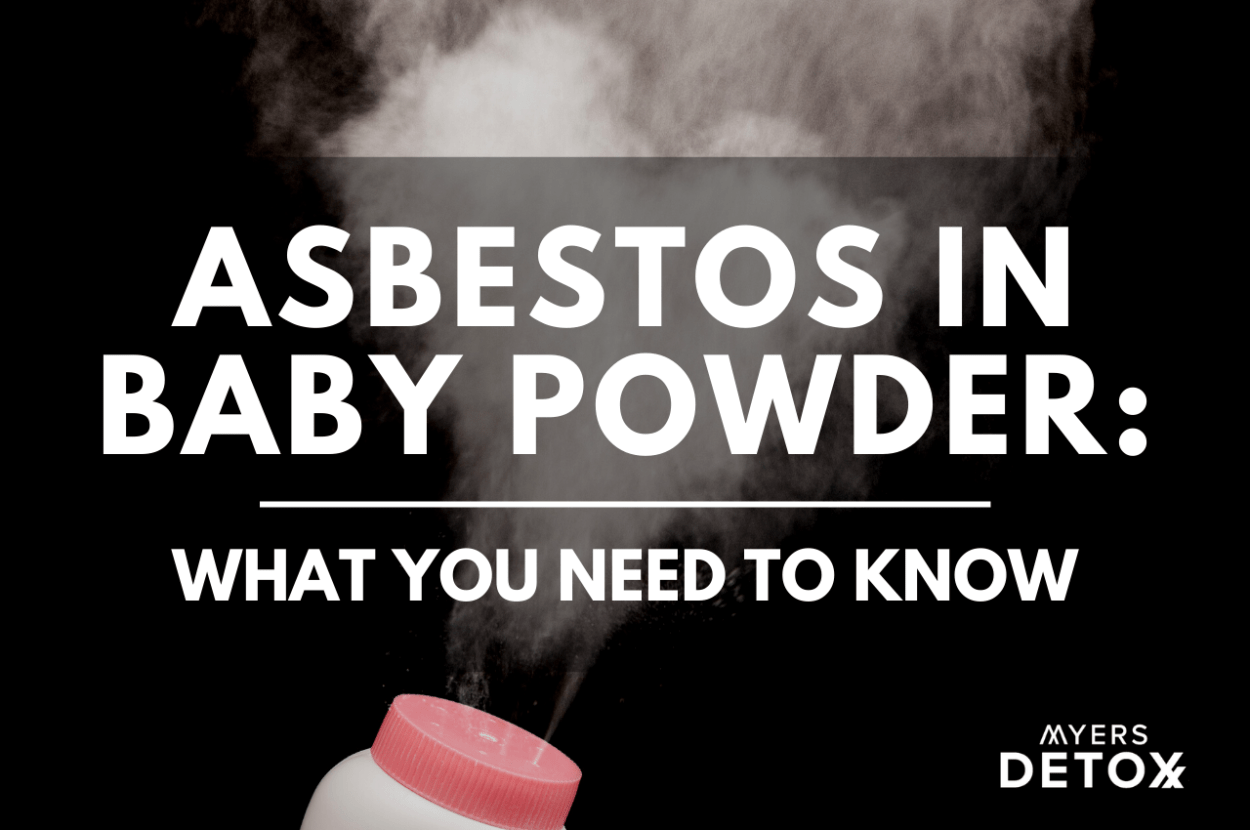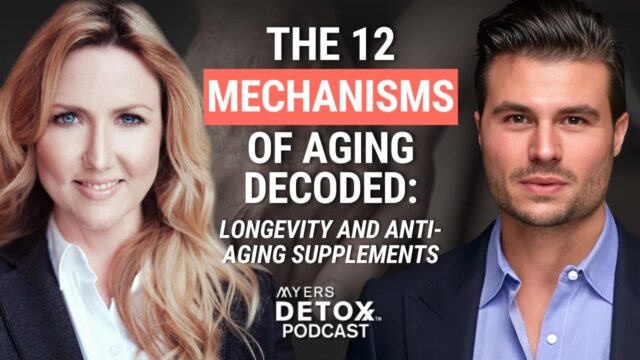When you think of talc or baby powder, the first thing that comes to mind is often safety and comfort — or at least it should be. Many women use baby powder as a feminine hygiene product, applying it to their bodies and breathing in the airborne powder.
In reality, however, most products tailor-made for beauty, hygiene and infants and small children are not scrutinized for their safety.
A prime example of this is the extraordinary number of lawsuits that have been filed against Johnson and Johnson over their talc-based baby powder. Thousands are claiming that their cancers, hormone issues and reproductive health have been harmed by this product (not to mention the untold harm to developing babies).
The cosmetics and personal care industry are not held to the same standards as the food and drug industry. As a result, detrimental health effects have been reported from long term use of products like baby powder often go unchecked.
While there’s no way to erase past mistakes from the use of personal care products with questionable safety, there are ways that you can protect your health from years of toxic exposure to products containing harmful chemicals. We’ll explore how in this article.
In this article, you’ll learn:
- The dangerous chemicals in baby powder
- Health concerns related to these toxic compounds
- The lawsuits brought against Johnson and Johnson for their baby powder products
- How to soak up and eliminate toxins from years of talc or baby powder use
Ingredients In Baby Powder
Johnson and Johnson baby powder contains only two ingredients: talc and fragrance.
Talc
Talc is used in baby powders, feminine hygiene products and makeup like mascara, lipstick and face powder.Talc is a naturally occurring mineral that’s mined from the earth. It’s composed of magnesium, silicon, oxygen, and hydrogen. It has many uses in the cosmetic and personal care industry due to its ability to remove moisture and prevent caking, improving the feel of products.
Millions of women use talc for feminine hygiene or use it on their babies to soak up moisture.
The primary concern around talc is its close proximity to asbestos in the mineral surface of the earth. Asbestos is a group of six naturally occurring fibrous minerals that have known carcinogenic effects. When mining for talc, due to its close proximity, asbestos can contaminate talc and lead to a range of health concerns like mesothelioma[1][2].
Even trace amounts of asbestos are considered dangerous. Its dagger-like fibers penetrate deep into tissue and can lead decades later to cancer of the lungs, voice box and ovaries, and to mesothelioma.
Johnson & Johnson, which has spent years insisting that its baby powder is safe, recalled 33,000 bottles of the product in 2019 after the Food and Drug Administration discovered evidence of asbestos, a known carcinogen, in one of the bottles.
Asbestos, which is made up of fine fibers, can be inhaled and stick to the mucus in your throat, windpipe, and bronchi, typically to be coughed up. However, some fibers may reach into the small airways in your lungs or penetrate the outer lining of your lungs and chest wall, irritating the cells and eventually leading to cancer[3].
Fragrance
Fragrance is a term that’s used to describe any ingredients that are used within a product to create a scent. The primary issue with the use of “fragrance” is that most fragrance bends are proprietary — meaning companies don’t have to disclose which chemicals are actually being used to create the fragrance.
What is understood, however, is that many chemicals used to create fragrances are linked to detrimental health effects like reproductive harm, cancer, and endocrine disruption[4]. In other words, they disrupt your hormone binding and synthesis and cause many health effects due to this problem.
There are over 3,000 chemicals listed as being used as fragrance compounds, just a handful of harmful chemicals, most of which are not on the product label, that could be lurking in your products fragrances include[4]:
- Phthalates
- Acetaldehyde
- Benzophenone
- Formaldehyde
- BHA (Butylated hydroxyanisole)
- BHT (Butylated hydroxytoluene)
- Benzyl Benzoate
Health Concerns Around Fragrances and Talc
If you’re like most people, you’ve considered baby powder a safe product and haven’t thought twice about its use. Unfortunately, the ingredients in baby powder can build up in your body over time, and can ultimately lead to a number of disturbing health conditions including:
#1 Mesothelioma
Mesothelioma is a type of cancer that occurs in the thin layer of tissue that covers your internal organs (known as your mesothelium). This aggressive and deadly form of cancer most often affects the tissues of the lungs, but can also impact the heart, abdomen, and area around the testicals[5].
The primary risk factor for mesothelioma is exposure to asbestos, which can happen due to environmental, workplace, or cosmetic exposure[6]. In the case of talc-based baby powders, it’s believed that the ease at which this fine powder can be inhaled is one potential route of exposure[6].
Johnson and Johnson lost two cases in 2018, in California and New Jersey, brought by people claiming that their baby powder products caused their mesothelioma. There are many more cases pending.
#2 Lung Cancer
Not surprisingly, talc is also associated with lung cancer. The primary difference between lung cancer and mesothelioma is that while mesothelioma develops within the mesothelium, lung cancer develops in your lungs.
This type of cancer is common in industrial workers exposed to talc through inhalation[7].
#3 Ovarian Cancer
Baby powder can often be used to apply to the genital area or used with sanitary napkins. This repeated exposure can eventually lead to talc making its way up to your ovaries, and studies have shown that women who used talcum powder had an increased risk of ovarian cancer.
The New York Times reported that nearly 15,000 lawsuits across the country claim that Johnson and Johnson’s baby powder caused the plaintiff’s cancer.
In many cases, women have even won lawsuits over talcum based baby powder use and ovarian cancer. This summer, 22 women with ovarian cancer successfully sued the company, arguing that Johnson & Johnson knew about the connection between talc and asbestos.
A jury in St. Louis awarded them $4.69 billion, one of the largest personal injury verdicts ever. [8][9].
Yet, there are other manufacturers of this talc and baby powder, which I presume similar or worse quality control than Johnson and Johnson over their products.
#4 Respiratory Disease
Fragrances are known to not only worsen but, in some cases, cause respiratory distress and diseases. Scents can be absorbed by your body through your skin or your lungs, and the chemicals can cause a range of reactions that lead to respiratory conditions.
In some cases, this is due to allergic reactions or sensitivities, while in other cases, it can be due to underlying conditions like asthma and COPD. Some respiratory symptoms associated with fragrances include shortness of breath, wheezing, and dizziness[10].
#5 Developmental and Reproductive Harm
Phthalates are a type of chemical compound that can often be found as a preservative in fragrances. Among the many detrimental health effects of phthalates are its effects on developmental and reproductive health[11].
As an endocrine-disturbing chemical, research shows that phthalates can delay the onset of puberty, may instigate the loss of pregnancy or cause preterm birth, and result in low birth weight. Specifically, phthalates seem to target the ovaries, where they can interfere with normal reproductive function and hormone signaling[12][13].
Phthalates are only one chemical in talc and baby powder that can cause reproductive harm, infertility and hormone disruption. There are dozens more under the term “fragrance” alone.
Takeaway
Reading about products like Johnson and Johnson’s baby powder can be unsettling. However, instead of taking the path of fear and anxiety over how these products may have impacted your health, you can take a more proactive approach and start working on eliminating your toxic overload.
The fact of the matter is, baby powder or not; your body is exposed to hundreds of toxic chemicals every day. For this reason, products that can keep your liver strong and the flow of toxins out of your body running smoothly are crucial to overall health.
Talc and fragrance in baby powder is just a single example of how the cosmetics and personal care industry may be irresponsibly sourcing ingredients. The list is a mile long.
Therefore, keep your eyes on the ingredient labels of the products you buy, and always try to include some type of detox support into your wellness regimen. We have all spent decades accumulating toxins from beauty and personal care products, among other sources.
You of course want to identify and stop using toxic products. But ultimately you need to be thinking about adding daily detoxification in your health regime to remove what you’ve been exposed to in the past.









